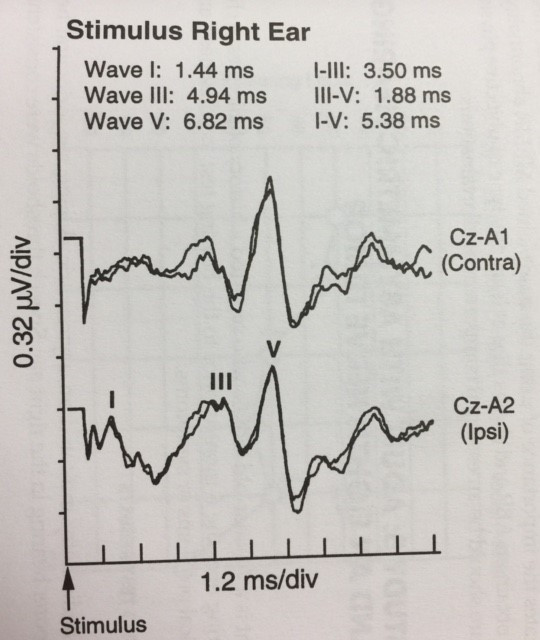June 3, 2019

A great challenge of audiology has always been to examine organs and structures we cannot see. When we look through an otoscope or camera into the ear canal, we can see as far as the eardrum. The most important parts of the ear for most disorders, however, are in the inner ear and even the nerve network carrying the hearing and balance signals towards the brain. Even imaging studies, such as MRI and CT, cannot show us the behavior of the nerve SIGNAL.
Luckily, we now have access to a form of EEG that allows us to examine the nerves in action. Since the hearing and balance nerves always receive signals from the inner ear, we know if we can observe the firing of impulses, we can tell if the brain is receiving the signal and if the signal is accurate.
The Auditory Brainstem Response, or ABR, is performed by placing electrodes on the forehead and behind the ears, as well as earphones inserted in both sides. Electrical activity that results from sounds presented to the ears is measured, and predictable patterns arise. Experience tells us how long it should take for each wave to appear on the computer screen. This all provides information about the nerve network of the hearing system.
The uses and variations for ABR testing include: infant hearing screenings, estimating hearing levels in adults that cannot respond to normal hearing test procedures, finding weaknesses in the balance organs, and aiding in diagnosis of conditions such as acoustic neuroma, Meniere’s disease and auditory neuropathy. We can now incorporate these techniques into test batteries for infants, children and adults.
We always strive to remain on the cutting edge of diagnosis and treatment. Our goal is to keep you on a clear path to good hearing and ear health.

